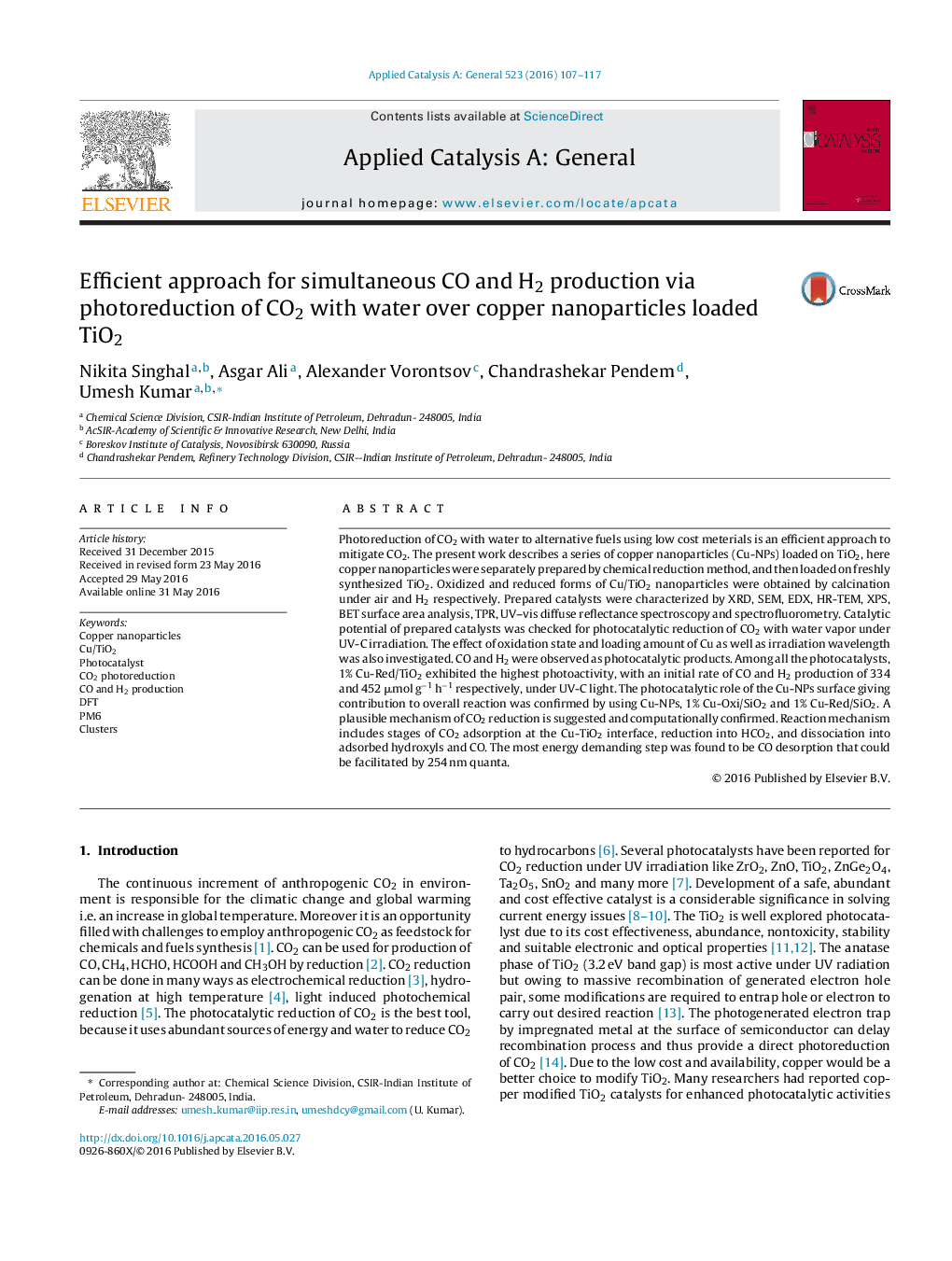| کد مقاله | کد نشریه | سال انتشار | مقاله انگلیسی | نسخه تمام متن |
|---|---|---|---|---|
| 38757 | 45790 | 2016 | 11 صفحه PDF | دانلود رایگان |

• Cu/TiO2 photocatalysts were prepared by loading of Cu-NPs on lab synthesized TiO2 NPs.
• The Cu-NPs loading amount and oxidation state controls the copper particle size and the products yield.
• CO and H2 were produced under UV-C from CO2 and H2O vapor over Cu/TiO2 and 1% Cu-Red/TiO2 showed 334 μmolg−1h−1 CO production.
• CO desorption was theoretically demonstrated to be the rate limiting step.
• The catalyst structure and its effect on the CO2 reduction were elucidated via quantum chemical modeling.
Photoreduction of CO2 with water to alternative fuels using low cost meterials is an efficient approach to mitigate CO2. The present work describes a series of copper nanoparticles (Cu-NPs) loaded on TiO2, here copper nanoparticles were separately prepared by chemical reduction method, and then loaded on freshly synthesized TiO2. Oxidized and reduced forms of Cu/TiO2 nanoparticles were obtained by calcination under air and H2 respectively. Prepared catalysts were characterized by XRD, SEM, EDX, HR-TEM, XPS, BET surface area analysis, TPR, UV–vis diffuse reflectance spectroscopy and spectrofluorometry. Catalytic potential of prepared catalysts was checked for photocatalytic reduction of CO2 with water vapor under UV-C irradiation. The effect of oxidation state and loading amount of Cu as well as irradiation wavelength was also investigated. CO and H2 were observed as photocatalytic products. Among all the photocatalysts, 1% Cu-Red/TiO2 exhibited the highest photoactivity, with an initial rate of CO and H2 production of 334 and 452 μmol g−1 h−1 respectively, under UV-C light. The photocatalytic role of the Cu-NPs surface giving contribution to overall reaction was confirmed by using Cu-NPs, 1% Cu-Oxi/SiO2 and 1% Cu-Red/SiO2. A plausible mechanism of CO2 reduction is suggested and computationally confirmed. Reaction mechanism includes stages of CO2 adsorption at the Cu-TiO2 interface, reduction into HCO2, and dissociation into adsorbed hydroxyls and CO. The most energy demanding step was found to be CO desorption that could be facilitated by 254 nm quanta.
Figure optionsDownload high-quality image (205 K)Download as PowerPoint slide
Journal: Applied Catalysis A: General - Volume 523, 5 August 2016, Pages 107–117